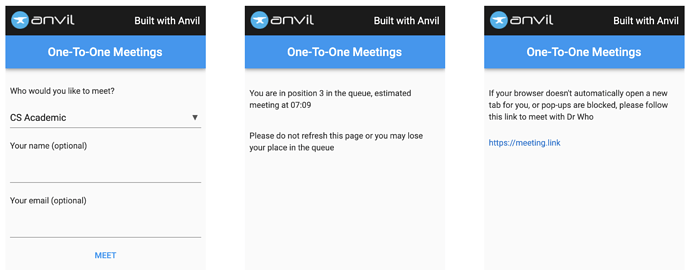At the University of Cambridge, our Open Days are all going online. We want to recreate some of the in-person meetings that happen where potential students and their families can talk to an academic or student during specified times. The obvious option of advertising a link to a video conferencing meeting doesn’t really work for several reasons. First, if anyone can join then it could change from a small meeting between a couple of people to a large meeting between a hundred or so! Second, even if the video conferencing app provides a waiting room, there is no feedback to visitors as to where they are in the queue, and when they are likely to be seen.
The solution is to build a queue that provides this functionality. We wanted:
- The ability to make different queues that would accept visitors (e.g. one for academics, one for students, or grouped by subject)
- The ability to have multiple people answering questions (hosts) per queue
- For visitors to know where they are in the queue
- Not to have to advertise a meeting link until a visitor is about to meet someone.
This is the app I’ve developed. The screenshot below shows three visitors in various stages of queueing:
On the left is the page that visitors initially see. You choose the queue you want to join, optionally add your name and email address, then click to wait for a meeting. In the middle, whilst waiting you get information about your position in the queue, including an estimation of when your meeting will be.
Finally, once you’ve waited long enough, you get your meeting link.
The host page is very similar, but hosts must provide a name and URL for the meeting, which will be conveyed to the visitor once the meeting can begin; they can then click to meet with the next visitor.
There’s also the ability to send messages to waiting visitors, and to close the queue to new visitors too, so that people don’t keep joining after the meeting times have ended.
Once the code is finalised and tested, I’ll post a link to it for people to clone, in case anyone else has a use for it too.
